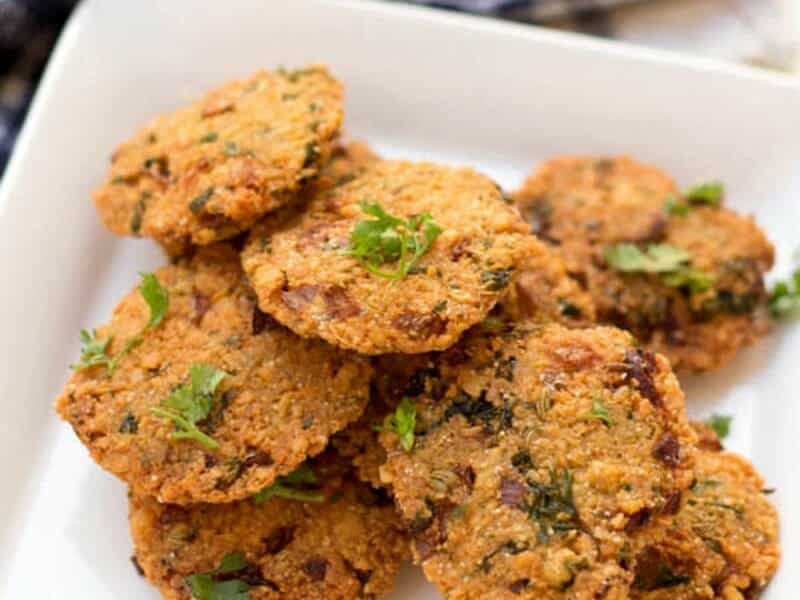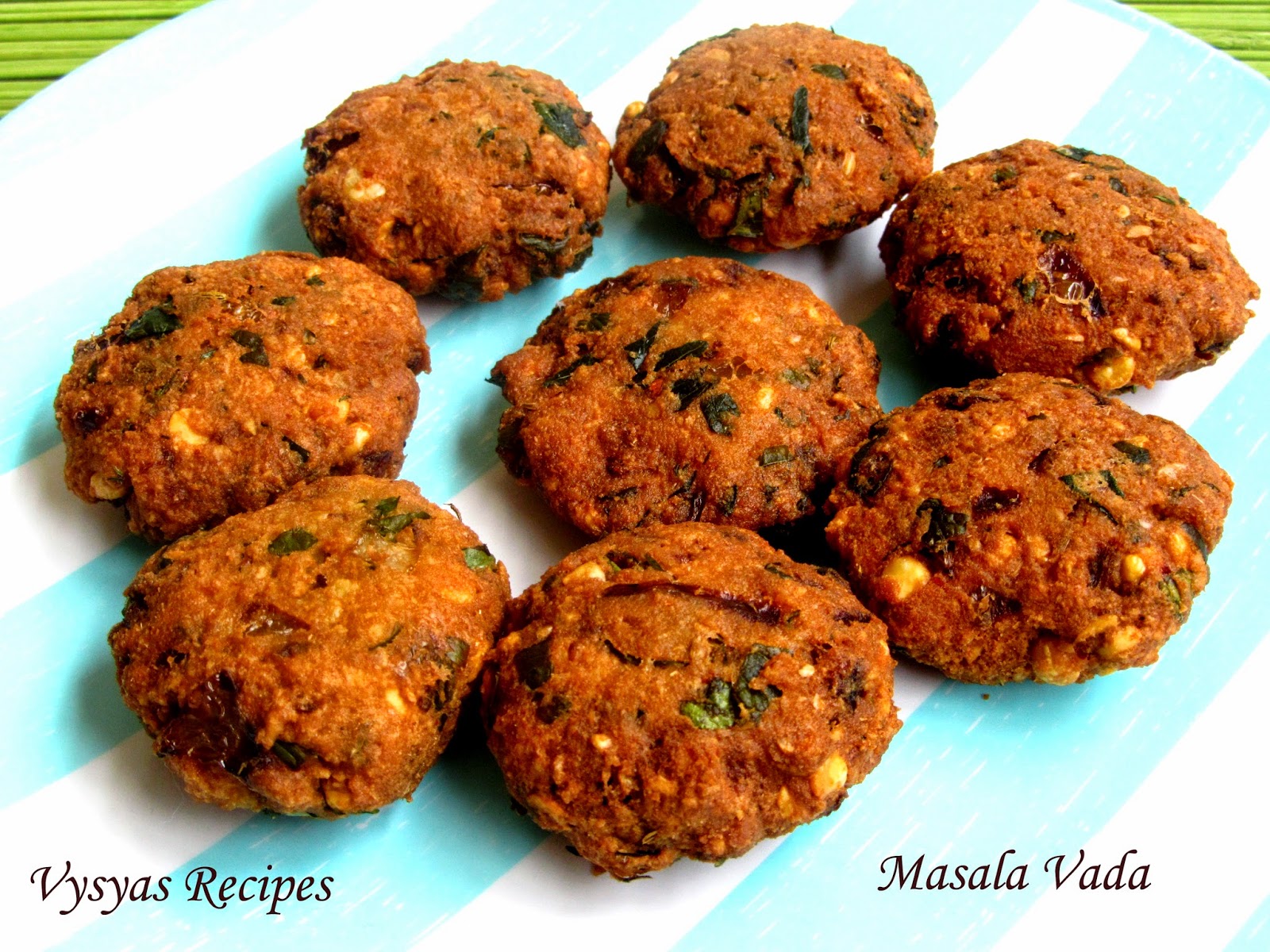Embark on a culinary adventure to the heart of South India, where the tantalizing aroma of masala vadai fills the streets. This crispy, savory snack is a beloved delicacy, enjoyed by locals and visitors alike. Join us as we delve into the secrets of this delectable dish, exploring its ingredients, preparation techniques, and cultural significance.
Masala vadai, a symphony of flavors and textures, is a testament to the culinary artistry of South India. Made with a blend of lentils, spices, and herbs, this delectable treat is a perfect accompaniment to your morning cup of chai or as an evening snack.
Whether you’re a seasoned cook or a novice in the kitchen, this recipe will guide you through the steps of creating this beloved dish, ensuring that you savor every bite.
Masala Vadai Ingredients
Masala vadai is a delicious and popular South Indian snack. It is made with a batter of lentils and rice, and is typically seasoned with a variety of spices. The ingredients used in masala vadai are all essential to its unique flavor and texture.
The main ingredients in masala vadai are:
- Urad dal: Urad dal is a type of lentil that is used to make the batter for masala vadai. It gives the vadai its characteristic soft and fluffy texture.
- Rice: Rice is used to add crunchiness to the vadai. It also helps to bind the batter together.
- Spices: A variety of spices are used to season the masala vadai batter, including cumin, coriander, fenugreek, and chili powder. These spices give the vadai its distinctive flavor.
- Onions: Onions are added to the batter for added flavor and crunchiness.
- Green chilies: Green chilies are added to the batter for a bit of heat.
- Ginger: Ginger is added to the batter for its unique flavor and aroma.
- Salt: Salt is added to the batter to taste.
The following table provides a summary of the ingredients used in masala vadai, along with their quantities and metric equivalents:
| Ingredient | Quantity | Metric Equivalent |
|---|---|---|
| Urad dal | 1 cup | 200 grams |
| Rice | 1/2 cup | 100 grams |
| Spices (cumin, coriander, fenugreek, chili powder) | 1 tablespoon | 15 grams |
| Onions | 1/2 cup, chopped | 50 grams |
| Green chilies | 1-2, chopped | 10-20 grams |
| Ginger | 1 tablespoon, grated | 15 grams |
| Salt | To taste | To taste |
Step-by-Step Preparation Method

Preparing masala vadais involves several key steps, each requiring attention to detail to achieve the perfect texture and flavor.
The preparation process can be divided into three main stages: grinding the batter, shaping and frying the vadais, and draining and serving.
Grinding the Batter
- Start by soaking the lentils and fenugreek seeds in water for 3-4 hours, or overnight.
- Drain the soaked lentils and fenugreek seeds and grind them into a fine paste using a blender or food processor.
- Add the chopped onions, green chilies, ginger, and garlic to the batter and grind again until well combined.
- Transfer the batter to a large bowl and add the salt, baking powder, and cumin seeds. Mix well until all ingredients are evenly distributed.
Shaping and Frying the Vadais
- Heat the oil in a deep fryer or heavy-bottomed pan to 180-190°C (350-375°F).
- Dip your fingers in water and take a small portion of the batter. Roll it into a ball and flatten it into a round patty, about 2-3 inches in diameter.
- Carefully drop the vadais into the hot oil and fry until they are golden brown and crispy on all sides.
- Remove the vadais from the oil and drain them on paper towels.
Draining and Serving
- Once the vadais have cooled slightly, serve them hot with your favorite chutney or sambar.
- Masala vadais can also be enjoyed as a snack or appetizer.
Serving Suggestions and Accompaniments
Masala vadai is a versatile dish that can be enjoyed in various ways. Traditionally, it is served with a simple coconut chutney, which complements the spicy flavors of the vadai. However, there are many other accompaniments that can enhance the taste and experience.
One popular accompaniment is sambar, a lentil-based stew that is often served with idli and dosa. Sambar adds a tangy and savory flavor to the vadai, creating a delightful combination.
Chutney Variations
- Tomato Chutney: A tangy and spicy chutney made with tomatoes, onions, garlic, and chili peppers.
- Coriander Chutney: A refreshing and aromatic chutney made with coriander leaves, mint leaves, green chilies, and coconut.
- Peanut Chutney: A nutty and flavorful chutney made with roasted peanuts, tamarind, and jaggery.
Variations and Adaptations
Masala vadai is a versatile dish that can be adapted to suit various preferences and dietary needs. Here are some variations and adaptations to explore:
Using Different Lentils
You can experiment with different types of lentils to create variations in taste and texture. Some suitable alternatives include:
- Urad dal (black gram): A common choice for masala vadai, urad dal imparts a slightly nutty flavor.
- Moong dal (green gram): This lentil yields a softer and more delicate vadai with a mild flavor.
- Chana dal (split chickpeas): Chana dal adds a bit of texture and a subtle sweetness to the vadai.
Adapting for Specific Dietary Needs
To accommodate specific dietary needs, you can make the following adaptations:
- Gluten-free: Replace the all-purpose flour with a gluten-free flour blend or rice flour.
- Vegan: Use plant-based milk, such as almond milk or coconut milk, instead of regular milk.
- Low-carb: Reduce the amount of all-purpose flour used and increase the proportion of lentils.
Health Benefits and Nutritional Value
Masala vadai is not only a delectable treat but also a source of essential nutrients that contribute to overall well-being.
This dish is a rich source of carbohydrates, providing the body with energy. It also contains dietary fiber, which aids in digestion and promotes a feeling of fullness. Masala vadai is a good source of protein, which is vital for muscle growth and repair.
Vitamins and Minerals
- Vitamin C: Masala vadai is a good source of vitamin C, an antioxidant that helps protect the body from damage caused by free radicals.
- Iron: This dish is a good source of iron, which is essential for red blood cell production and oxygen transport.
- Calcium: Masala vadai is a good source of calcium, which is important for strong bones and teeth.
Health Implications
Consuming masala vadai regularly can have several health benefits. The high fiber content can help lower cholesterol levels and reduce the risk of heart disease. The antioxidants present in the dish can help protect against certain types of cancer. Additionally, the iron content can help prevent anemia.
However, it is important to note that masala vadai is a fried food and should be consumed in moderation. Excessive consumption can lead to weight gain and other health issues.
Cultural Significance and History
Masala vadai holds a special place in various cultures and has a rich history.
In South India, masala vadai is a staple breakfast item, often served with chutney or sambar. It is also a popular evening snack or street food. In Sri Lanka, it is known as vadai and is a common accompaniment to rice and curry.
In Malaysia and Singapore, masala vadai is known as vadai and is enjoyed as a breakfast dish or tea-time snack.
Historical Origins
The origins of masala vadai can be traced back to ancient India. It is believed to have originated as a simple lentil fritter. Over time, it evolved into a more complex dish with the addition of spices and other ingredients.
Masala vadai became a popular street food in the 19th century, when it was sold by vendors in markets and fairs.
Recipe Troubleshooting
Despite following the recipe carefully, there may be instances where the masala vadai does not turn out as expected. Here are some common problems that may arise and their solutions to help you achieve perfect masala vadai every time.
Uneven Frying
If the masala vadai is not frying evenly, it could be due to several reasons:
- Inconsistent Oil Temperature: Ensure the oil is heated to the correct temperature (180-190°C or 356-374°F) before adding the vadai. Use a thermometer to monitor the temperature accurately.
- Overcrowding the Pan: Do not overcrowd the pan with too many vadai at once. This prevents the oil from circulating properly, resulting in uneven frying.
- Insufficient Oil: Make sure there is enough oil in the pan to submerge the vadai halfway. This allows for even heat distribution and prevents burning.
Visual Presentation

Masala vadais can be visually appealing when presented creatively. The vibrant green color of the vadais, complemented by the golden-brown exterior, makes for an eye-catching dish.
High-quality images of the vadais can be used to showcase their texture and crispiness. Descriptive captions can highlight the key ingredients and flavors of the dish.
Serving Styles and Variations
Masala vadais can be served in various styles to enhance their visual appeal.
- Traditional Style: Vadais served on a plate with coconut chutney and sambar.
- Appetizer Platter: Vadais cut into bite-sized pieces and arranged on a platter with other appetizers, such as onion pakoras and samosas.
- Chaat-Style: Vadais topped with yogurt, sev, and chutneys, served in a bowl.
- Mini Vadais: Small, bite-sized vadais served as a snack or appetizer.
- Vada Pav: Vadais placed inside a bread roll and topped with chutneys and onions.
| Variation | Description |
|---|---|
| Urad Dal Vada: | Made with whole urad dal, resulting in a denser and chewier texture. |
| Moong Dal Vada: | Made with moong dal, giving it a lighter and softer texture. |
| Chana Dal Vada: | Made with chana dal, providing a nutty flavor and slightly crispy exterior. |
Last Recap
As you savor the crispy exterior and fluffy interior of your homemade masala vadai, take a moment to appreciate the rich culinary heritage of South India. This dish is not merely a snack; it is a testament to the region’s vibrant culture and love of food.
Whether enjoyed as a standalone treat or paired with your favorite chutney, masala vadai is sure to become a staple in your culinary repertoire. So, gather your ingredients, don your apron, and embark on this culinary journey to the heart of South India.
FAQ Corner
What is the secret to achieving the perfect crispy exterior on masala vadai?
The key to crispy vadais lies in the batter’s consistency. Ensure the batter is not too thick or too thin. It should be thick enough to coat the lentils evenly but not so thick that it becomes dense. Additionally, using hot oil for frying helps create a crispy exterior.
Can I use different lentils for this recipe?
Yes, you can experiment with various lentils. Urad dal (black lentils) is the traditional choice, but you can also use a combination of lentils such as moong dal (yellow lentils) or chana dal (Bengal gram lentils) to add different flavors and textures.
How can I make masala vadai healthier?
To make a healthier version of masala vadai, you can bake them instead of frying. Simply preheat your oven to 400°F (200°C) and bake the vadais for 15-20 minutes, or until golden brown. You can also reduce the amount of oil used in the batter.
